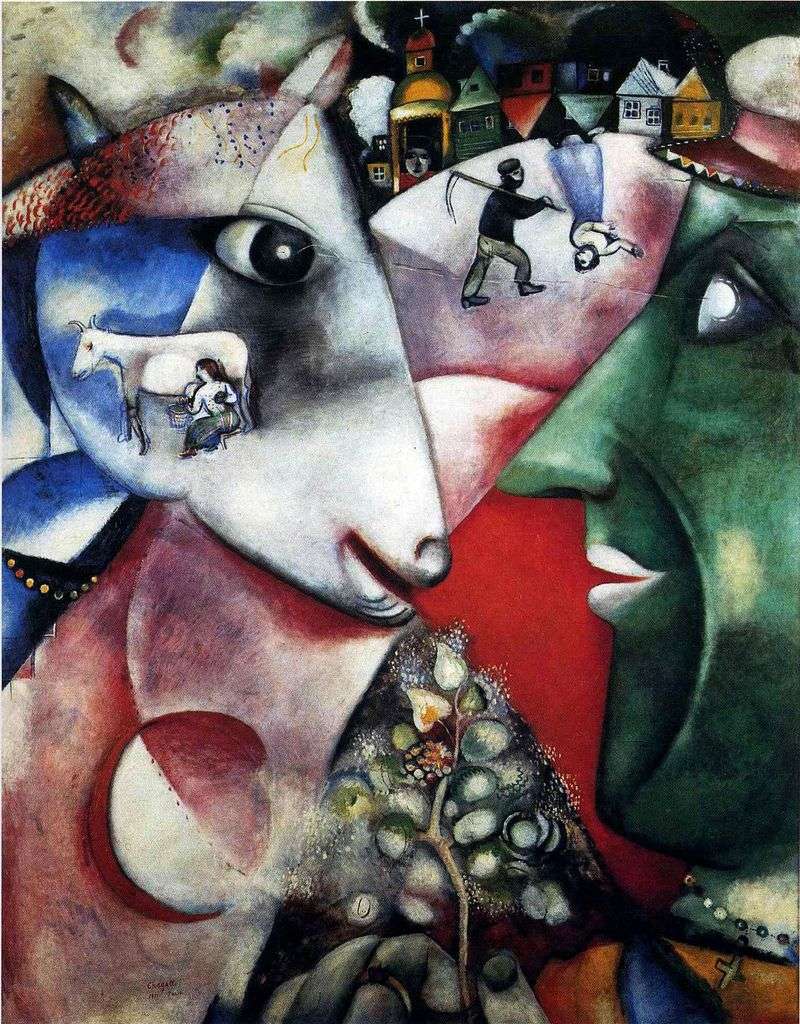
One of the most poetic allegories of the artist, a reflection of the duality of his consciousness. The name for the picture was invented by the French friend of Chagall Blaz Cendrars.
With all the naively fantastic convention, different scales, we can see quite definite lines of composition and life geometry. Division by sectors through lines intersecting at different angles, indicates a proximity to Cubism. Breach of perspective, mismatch in size – Fauvism; the creation of color with natural colors – the embodiment of impressionistic trends.
In the center are the artist’s and horse’s heads, united by a barely visible thread of glance. They – as if in a single circle, a kind of “circle of village life.” A strange commonality between man and animal is supported by contrasting red and green colors. The profile of the person on the right with translucent eyes, directed to the distance is a kind of self-portrait of the artist.
In the background, a woman – a symbol of fertility – as if running away from a peasant with a scythe, while it is depicted upside down, which can be perceived as a transfer of difficulties in understanding the sexes. Behind them – a village in which colorful houses, some turned up, symbolize the native for Chagall Vitebsk. Below is the tree of life and the moon blocking the sun. Each of the scenes in this picture is deeply symbolic and evokes multiple associations. This allows you to imagine and comprehend the whole unusual picture of the artist’s world.


